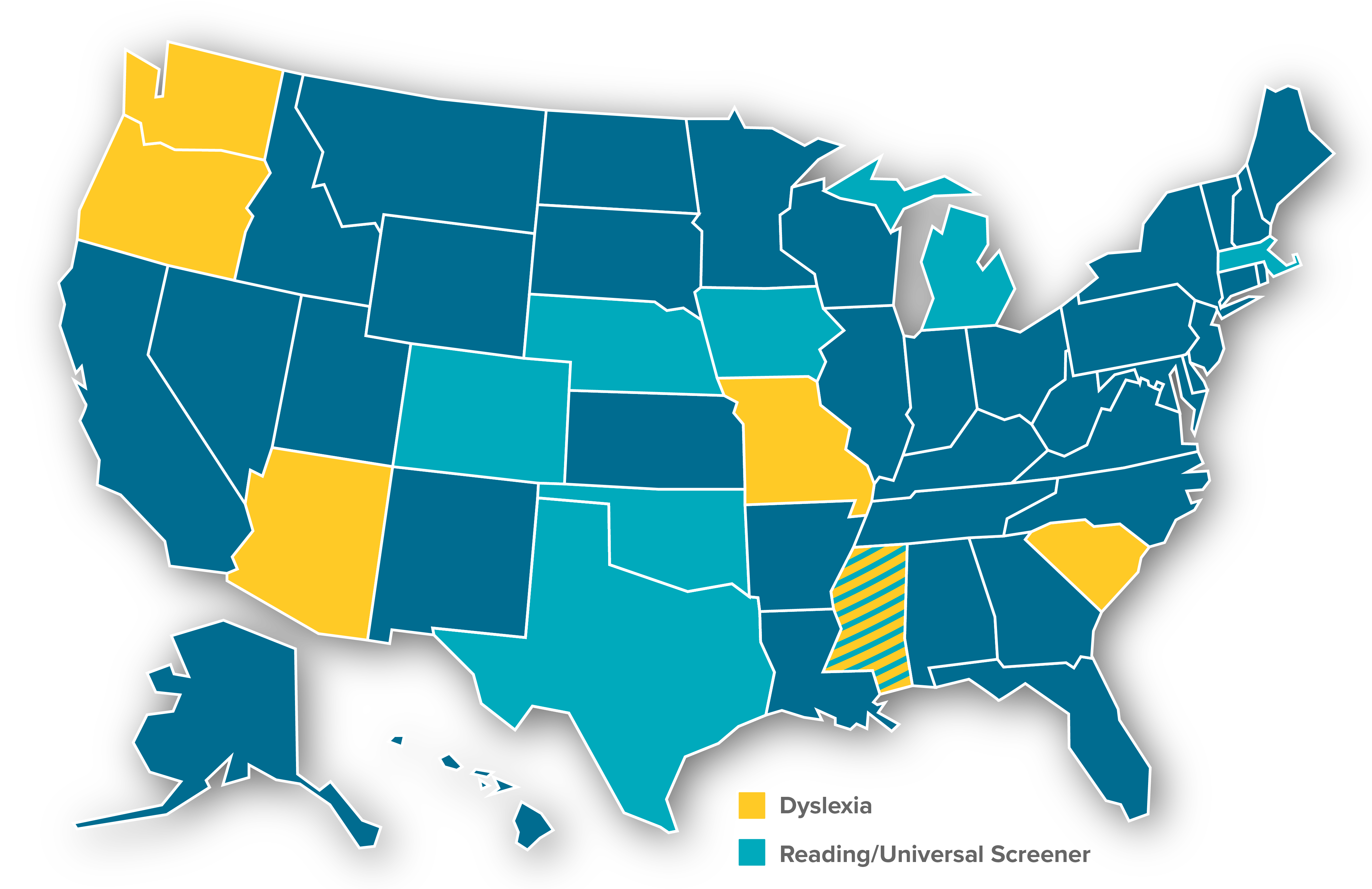By: Judy Loughlin, Ph.D., HILL for Literacy
Many of us can agree with the following statement: “The ultimate goal of reading instruction is to enable children to read fluently with good comprehension for enjoyment and information.”
But it is far more difficult to find consensus on how to go about attaining that goal.
The National Reading Panel (NRP; 2000) offered the heuristic “The 5 Components of Reading” that many in the field can recite blind-folded: Comprehension is built on a foundation of Phonemic Awareness (PA), Phonics, Fluency, and Oral Language Development/Vocabulary.
![]()
Gough and Tunmer offered another model, the “Simple View of Reading” (1986). To read with good comprehension, the reader needs to be operating strongly on two main cylinders: language comprehension and the ability to decode words from the page.
According to this model, a reader with weak language development but strong decoding skills might be able to pull the words up from the page, but will likely be able to comprehend the text read only as well as s/he would have if it had been read to him or her—in other words, not very well.
Conversely, a reader with strong language skills but weak decoding skills will not even be able to get enough words from the page to support comprehension.
Both the NRP and the Gough and Tunmer models have in common the role of key reading subskills in reading development. For this reason, teachers can benefit from knowing which subskills a student has or has not developed in order to provide additional student-specific instruction.
Hollis Scarborough unpacked some of the big ideas within each of Gough and Tunmer’s two big cylinders and provided us with the beginning of a road map for keeping our collective finger on the pulse of each of our developing readers (2001).
She captures the idea that there are many early literacy foundational subskills that need to be developing simultaneously and independently, each brought to greater sophistication and automaticity over many years. Using the metaphor of a rope, Scarborough defined each of the five reading components as a “strand” requiring specific instruction.
Each of these strands of the rope contain many subsets of skills. Within each strand, researchers have reliably identified the most critical subskills likely to provide the biggest bang for instructional buck at each stage of literacy development.
These skills can be measured using brief early reading assessments (e.g., FAST™ earlyReading) to help teachers know what instruction each student needs.
Assessment to Intervention
The earlyReading assessments in FAST™ include 12 different subtests that focus on measuring three of the five components of reading: phonemic awareness, alphabetic principle, fluency.
Phonemic Awareness. This skill involves being able to blend and segment the sounds in words. Instruction in oral blending and oral segmenting early in Kindergarten have proven to have big benefit in ensuring ongoing reading success moving through Kindergarten and into Grade 1.
This stands to reason because each is the foundational enabling skill for blending sounds picked up from print to read words and segmenting sounds in spoken words for the purpose of spelling. Students who receive lots of opportunities to practice oral segmenting and blending will move more readily toward applying those skills to print situations.
The word blending and word segmenting subtests in the FAST earlyReading assessment measure a student’s mastery of these phonemic awareness skills.
Alphabetic Principle. We have long considered letter naming to be a foundational skill for reading. Research has guided us to move the skill of letter naming into letter-sound matching earlier than had been traditional.
Letter-sound matching is the essence of the alphabetic principle and is also known as phonics. Teaching letter-sound skills has bigger instructional bang than does letter naming alone. By teaching letter-sound matching skills the Kindergarten teacher can move her students toward sound blending from print sooner.
We do not need to wait until our students have mastered all their letter sounds for them to begin blending them into words. The only limit to expanding your students’ word blending possibilities is the amount of time it takes you to teach more letter sounds.
Our Kindergarten teachers like their students to have most of their sounds under their belts by mid-year. In order to know which students have mastered the letter sounds taught, teachers can use the FAST™ earlyReading letter sounds, decodable words, and nonsense words subtests.
Fluency. Reading fluency refers to the use of accuracy, speed, and prosody while reading. It is NOT about speed reading. Fluency is a measure of the automaticity a reader uses to decode and understand a word fast enough to comprehend the full sentence or story.
Automaticity is important because both vocabulary and comprehension cannot happen if too much of a reader’s mental energy is taken up with trying to decode and blend a word. With adequate fluency, a reader can focus the majority of mental energy on the word meanings and purpose of the entire text. When fluency is poor, a reader is unlikely to understand, or enjoy reading, any text.
Reading fluency has gained a great deal of attention in reading instruction in recent years, but might be overemphasized. It is important, but should not be the primary focus of instruction. Instead, it is a transitional skill on the way to strong reading comprehension. In order to know which of their students are fluent, and which need more instruction, teachers can use FAST™ earlyReading subtests of sight words and sentence reading.
Keep Track of Student Growth
Getting each of these subskills developing at the appropriate time, and mastered according to evidence-based time-tables, has become a major focus in our early grades.
Being able to do this depends on having reliable and valid assessments that are sensitive both to differences between students and to changes within each individual. This allows us to use the same assessments for grouping and so that we can monitor student progress student over short periods of time.
We need an assessment system that can map onto the continuum of early reading skills in a continuous way. Such an assessment system helps teachers to support students as they work to master a skill level until they are ready to “pass the baton” and move to the next level.
In order to support all students’ reading development, it is essential that primary grade teachers (i.e., K-1) understand the key components of reading, how to measure them, and how to use assessment data to design instruction for each student’s reading instruction needs.
References
Gough, P. B., & Tunmer, W. E. (1986). Decoding, reading, and reading disability. Remedial and Special Education, 7(1), 6-10. doi:10.1177/074193258600700104
Scarborough, H. A. (2001). Connecting early language and literacy to later reading (dis)abilities: Evidence, theory, and practice. In S. Neuman & D. Dickinson (Eds.), Handbook for research in early literacy. New York: Guilford Press.
Dr. Judy Loughlin taught elementary school for many years before returning to the University of Massachusetts, Amherst to earn her Ph.D. in School Psychology. Since then she has worked as a school psychologist, reading specialist, and consultant with schools in Connecticut and Massachusetts. She has also consulted for the Connecticut and Massachusetts Departments of Education concerning state-wide reading improvement programs. Contact Dr. Loughlin at www.jeloughl@gmail.com.







